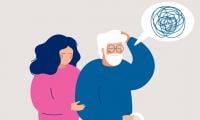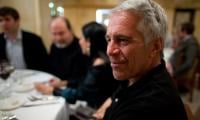Walking through the Rawalpindi streets today is not as pleasant as it was in my childhood days. That has been the most unforgettable experience of my life. In those days Rawalpindi streets were filled with relaxed pedestrians. The air felt fresh, even a bit scented. The normal jarring soundtrack of today’s streets was absent.
“There was no ominous vehicle to hit me as I walked, no nonstop beeping to disturb me. Only a light horse-drawn two-wheeled tonga appeared. Carefree birds were seen in the city trees, chirping. It was an unbelievable feeling compared to the crowded and frenzied city of today,” says Murad Ali.
“I often think, what was the cause of this feeling? It was just due to one thing, the absence of vehicles on the street. It makes me realize the benefits of a vehicle-free city,” says Wajahat Hussain.
Seerat Abbas says: “Planning a vehicle-free pedestrian city is the need of the time. It may sound ludicrous, particularly when the rising middle class increasingly demands personal vehicles as the safest mode of transportation and a symbol of their social status. However, an actual demonstration of what it would feel like without vehicles on the street may convince people to view vehicle-free streets as a sustainable way of life.”
“Executing a vehicle-free plan in Rawalpindi can prove challenging as the social, economic, and political conditions here are different. But our longing for betterment must be stronger than our innate hesitancy to generate change,” says Rajab Hussain.
“Are we going to capitulate to the fuel-based and emission-filled lifestyle that pollutes our cities and damages our health or jumpstart new models of healthy living? We need a visionary city authority to stand up and choose what is good for the people in the long run,” says Masroor Raza.
“Given the politically powerful transportation mafia, the only way to mobilize public opinion is to demonstrate what is good for the people. People need to see, even at a small scale, what is helpful and healthy,” says Haider Aftab.
“We need to bring the healthcare community and urban-planning community together to embark on practical research on the health benefits of vehicle-free streets, commuting by walking, and low-emissions,” says Qurban Jafri.
“We should also have a better understanding of how much are household medical bills due to environment-related health hazards? How much of this results from a sedentary lifestyle? We need new insights into how urban planning, footpath design, green space, urban water management, urban vegetation, and landscape design can reduce health risks,” adds Qurban.
Waheed Rizvi says: “Our city and its people deserve a healthier environment. Alongside good infrastructure, we also need public places for our mental wellbeing. Rawalpindi should flourish as a place for people, not for vehicles, noise, and anxiety”.















